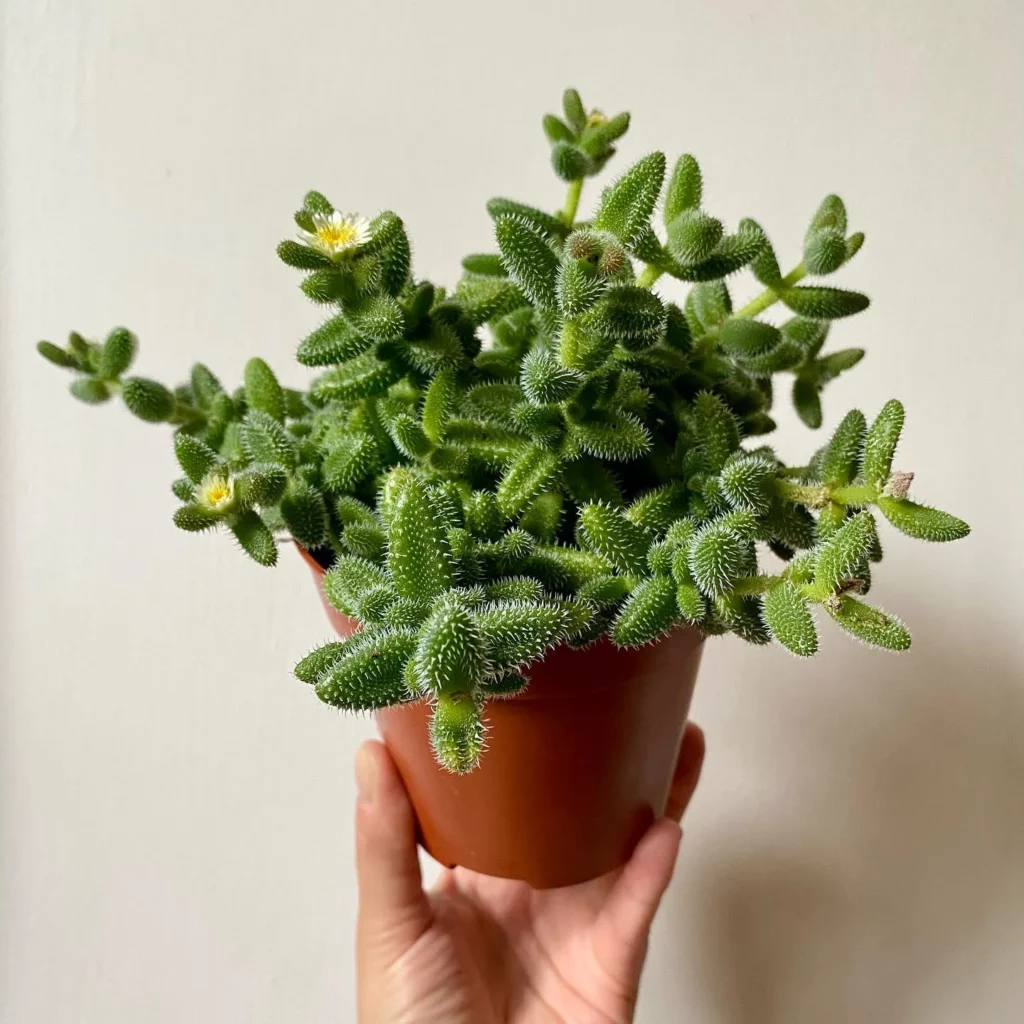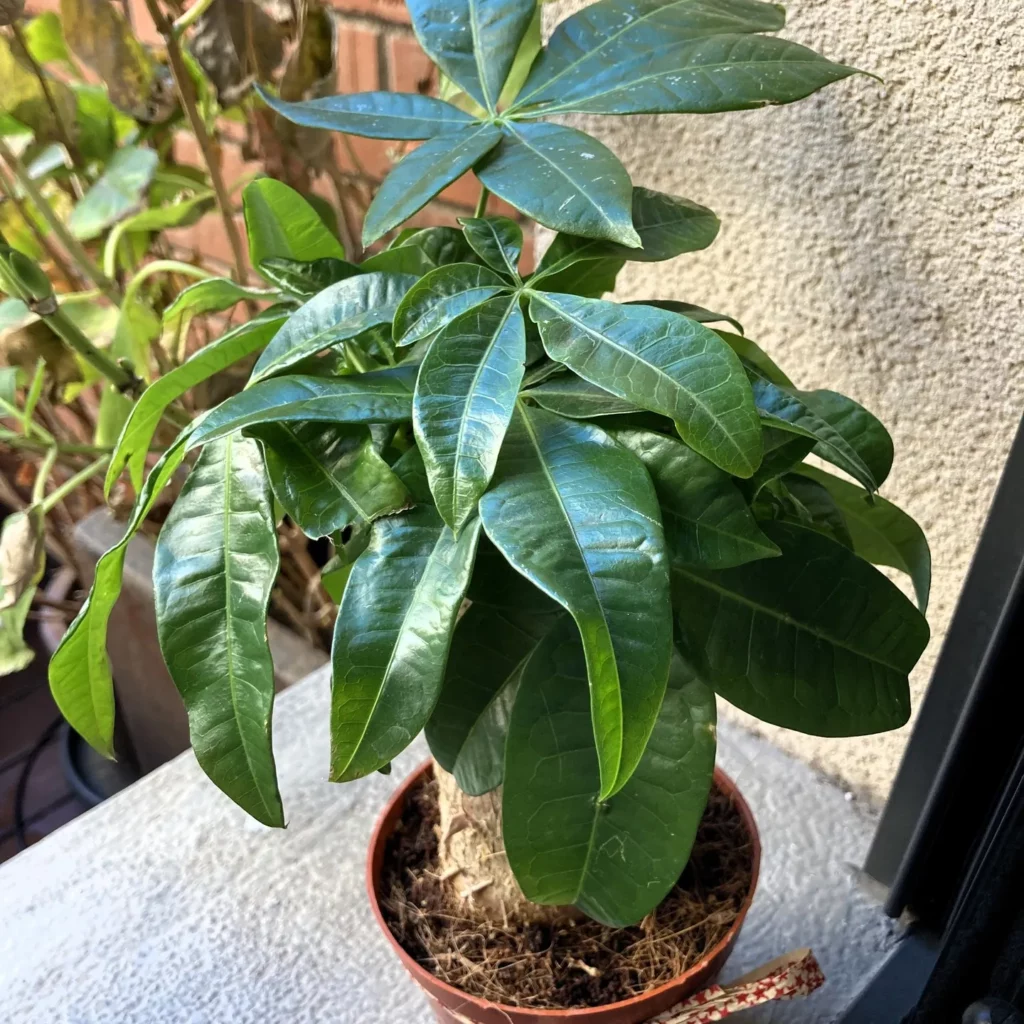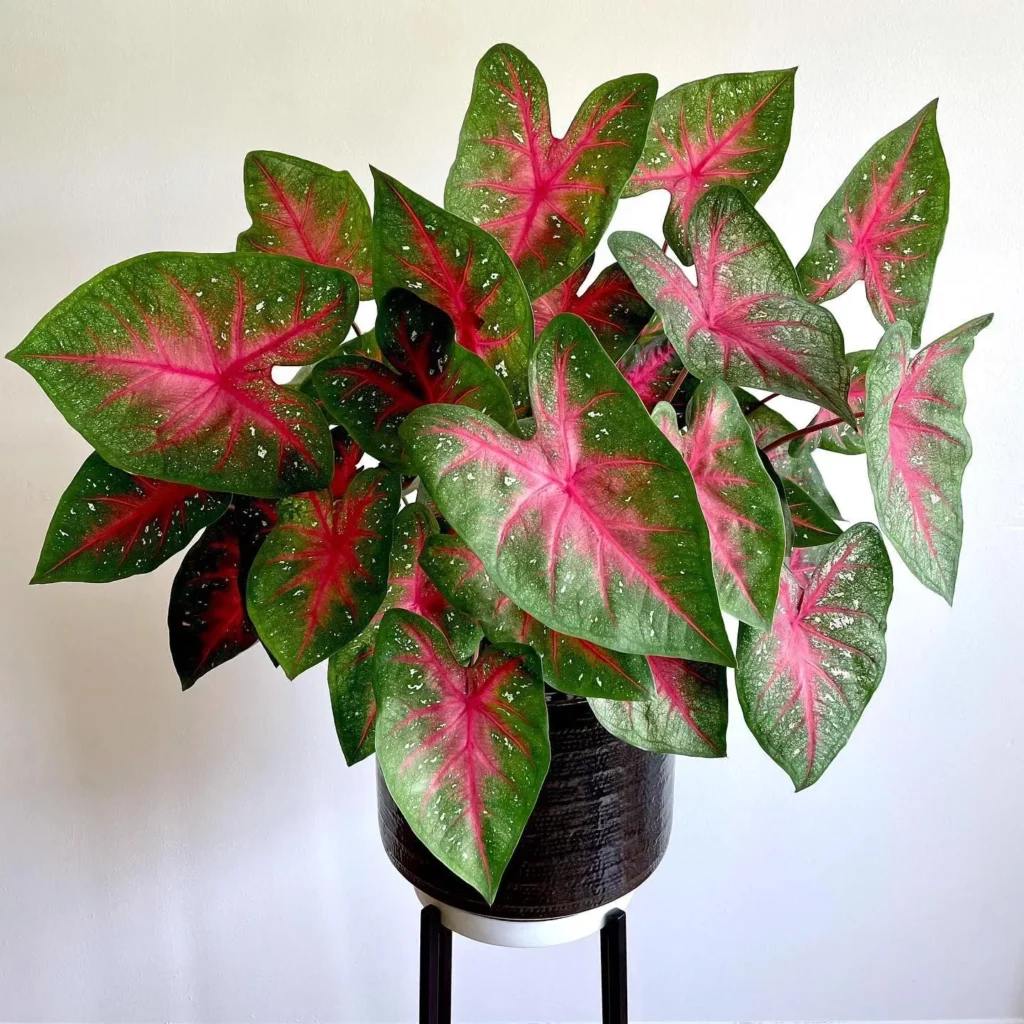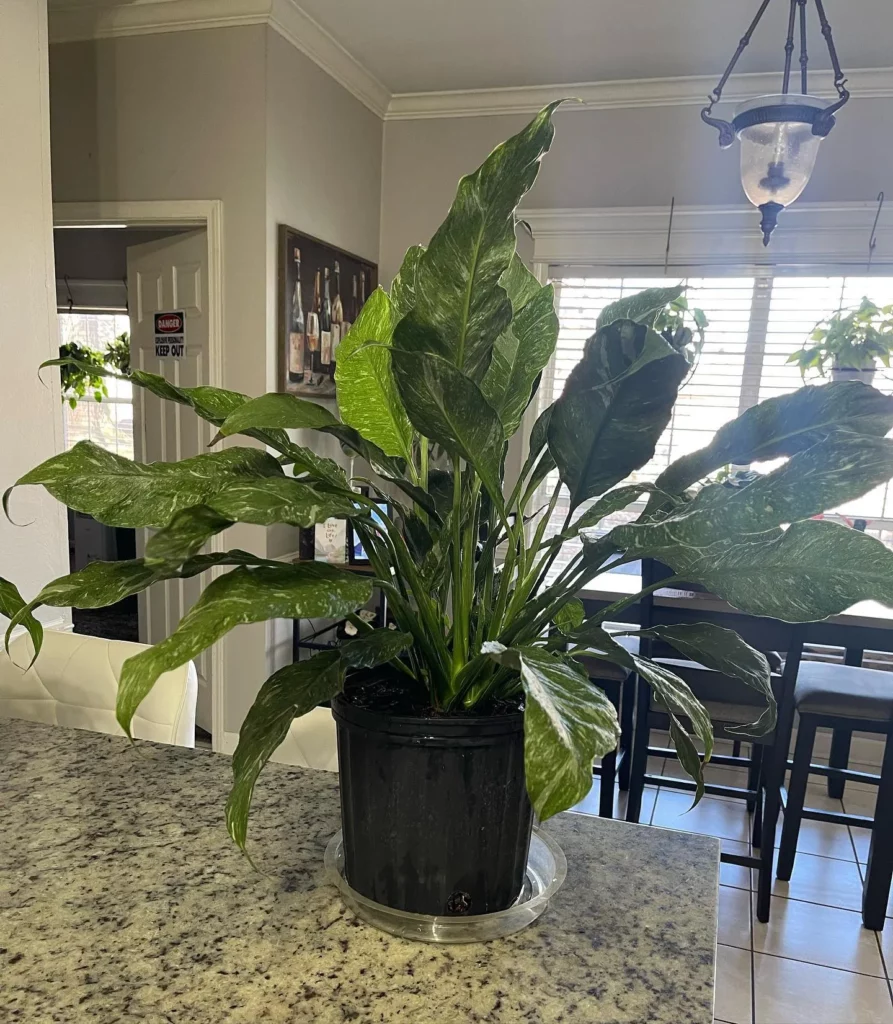To care for a Pickle Plant, provide it with bright, indirect sunlight, well-draining soil, minimal water, and occasional fertilization during its growing season.
The pickle plant, also known as Kalanchoe delagoensis, is a standout among succulent enthusiasts for its intriguing characteristics and eye-catching appearance. Whether you’re a beginner gardener or an experienced plant parent, this guide will provide you with all the information you need to ensure the health and happiness of your pickle plant.
Introduction to the Pickle Plant

Get to know the quirky pickle plant, a unique succulent that stands out among its peers. With its intriguing characteristics and distinctive appearance, the pickle plant has become a favorite choice for both indoor and outdoor gardens.
The pickle plant, scientifically known as Delosperma echinatum, derives its nickname from the peculiar shape of its leaves, which resemble tiny pickles. This quirky feature adds an element of whimsy to any plant collection and makes it a delightful conversation starter.
Native to South Africa, the pickle plant belongs to the family Aizoaceae and is known for its ability to thrive in arid environments. Its growth habits are similar to other succulents, with low-growing, trailing stems that spread outwards and form a dense mat-like appearance.
A standout feature of the pickle plant is its unique adaptation to survive in dry conditions. The leaves are covered in bristly, white hairs called trichomes, which help reduce water loss and protect the plant from intense sunlight. These trichomes give the leaves a fuzzy texture, adding to the plant’s appeal.
When it comes to care, the pickle plant is relatively low-maintenance, making it suitable for both beginners and experienced plant enthusiasts. Its tolerance to drought and its ability to thrive in a wide range of temperatures make it a versatile choice for various climates.
Whether you’re an avid succulent collector or simply looking to add a touch of quirkiness to your garden, the pickle plant is sure to make a delightful addition.
Light Requirements for the Pickle Plant
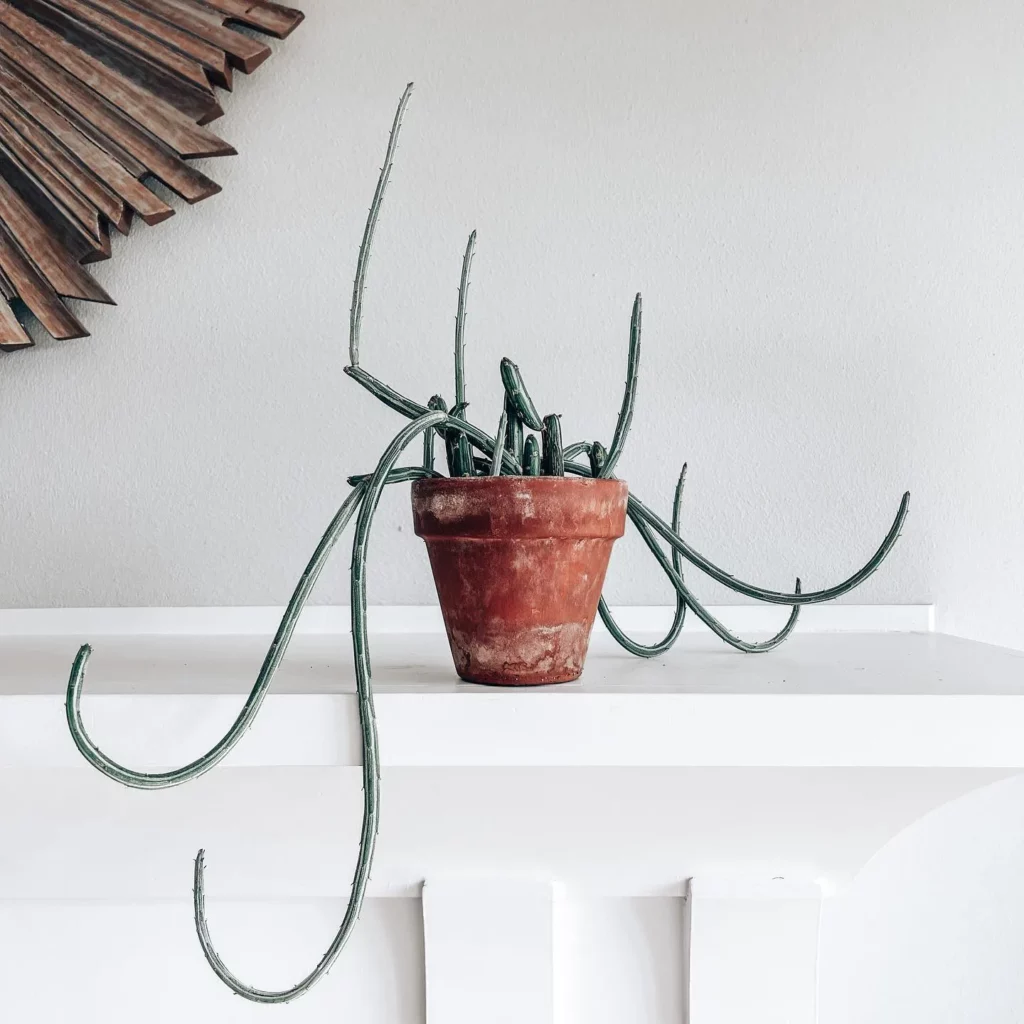
Proper lighting is essential for the healthy growth of your pickle plant. Understanding its light requirements will help you provide the ideal conditions for this quirky succulent.
How much sunlight does the pickle plant need?
The pickle plant thrives in bright, indirect sunlight. It needs at least 4-6 hours of sunlight per day to grow properly. However, it is important to protect it from intense, direct sunlight, as it can cause sunburn and leaf damage.
Can the pickle plant tolerate shade?
While the pickle plant prefers bright light, it can tolerate partial shade. If you’re growing it indoors, place it near a window where it can receive bright, filtered light. Outdoors, consider providing some shade during the hottest part of the day to prevent leaf scorching.
How to provide the perfect balance of light
To provide the perfect balance of light for your pickle plant, follow these tips:
- Rotate the plant regularly: This ensures that all sides of the plant receive equal amounts of light, preventing it from leaning towards the light source.
- Use quirky plant lighting: If you’re growing your pickle plant indoors or in a low-light area, you can supplement its light needs with quirky plant lighting. LED grow lights are a popular choice as they provide the right spectrum of light for optimal growth.
Watering the Pickle Plant
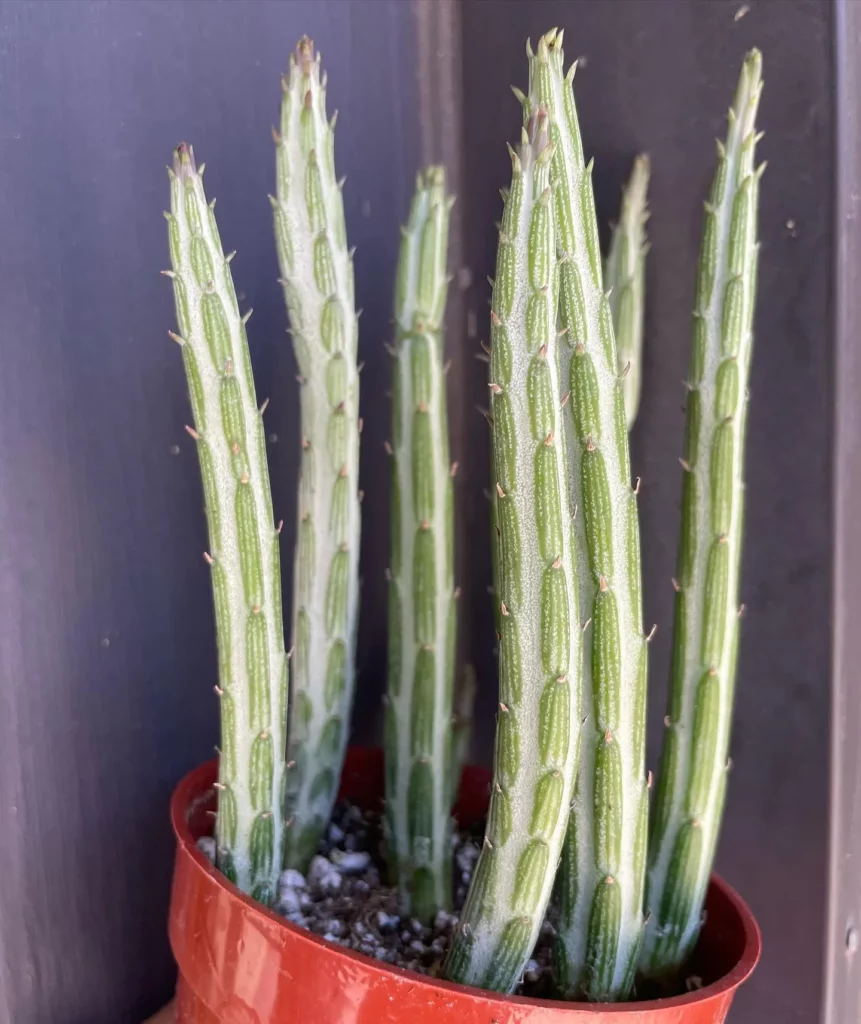
Proper watering is crucial for the health and longevity of your pickle plant. As a quirky succulent, it has specific watering needs that require attention and care. Follow these guidelines to ensure your pickle plant thrives:
How Often to Water
The watering frequency for your pickle plant depends on various factors, including the season, temperature, and humidity levels. To prevent overwatering and root rot, allow the soil to dry out completely between waterings.
As a general rule, water your pickle plant every 10-14 days during the growing season and reduce watering frequency to once every 3-4 weeks during winter dormancy.
How Much Water to Give
When watering your pickle plant, make sure to provide enough moisture without causing waterlogging. A thorough drenching is essential to ensure the water reaches the roots.
Water until it begins to seep out of the drainage holes at the bottom of the pot, indicating that the soil is adequately saturated.
Tip: Use a well-draining soil mix to prevent water from pooling around the roots. Adding perlite or sand to the potting mix can enhance drainage and prevent waterlogged conditions.
Preventing Root Rot and Dehydration
Overwatering can lead to root rot, while underwatering can cause dehydration and damage to the pickle plant. Here are a few tips to maintain proper moisture balance:
- Avoid letting the plant sit in standing water.
- Check soil moisture levels before watering by inserting your finger about an inch into the soil. If it feels dry, it’s time to water.
- Observe the plant for signs of underwatering, such as wilting or drooping leaves. Adjust the watering frequency accordingly.
- Consider the environmental conditions, such as temperature and humidity, when determining the watering schedule.
Soil and Potting Requirements for the Pickle Plant

When it comes to the quirky pickle plant, providing the right soil and potting mix is essential for its health and overall growth. The soil composition and drainage capabilities play a vital role in ensuring that your pickle plant thrives in its environment.
For the quirky pickle plant, it’s important to use a well-draining potting mix specifically designed for succulents. This type of mix allows excess water to flow freely, preventing waterlogged roots that can lead to root rot.
The ideal potting mix for your pickle plant should consist of a combination of ingredients that provide both moisture retention and proper drainage. A mix of coarse sand, perlite, and regular potting soil is a great option. The coarse sand provides better drainage, while perlite enhances aeration in the soil.
It’s also important to choose the right container size for your pickle plant. A pot that is too large can retain excess moisture and potentially lead to overwatering, while a pot that is too small may restrict root growth. Consider repotting your pickle plant every 1-2 years into a slightly larger container to allow for healthy root development.
When repotting, gently remove the pickle plant from its current container, being mindful not to damage the delicate roots. Place it in the new pot and fill in the gaps with the prepared potting mix, ensuring that the plant is secure and stable. Water lightly after repotting to help the soil settle.
| Ingredients | Amount |
|---|---|
| Coarse sand | 50% |
| Perlite | 30% |
| Regular potting soil | 20% |
Temperature and Humidity Considerations for the Pickle Plant
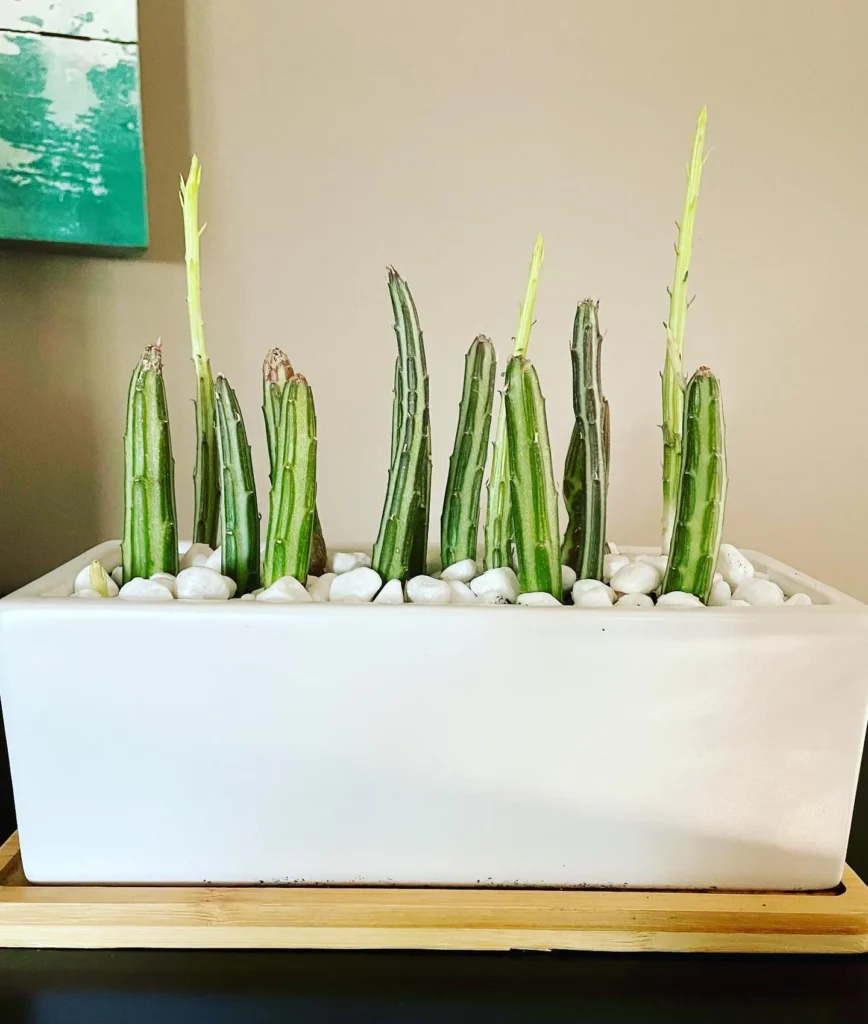
Creating the perfect environment for your quirky pickle plant involves understanding its temperature and humidity preferences. By providing the right conditions, you can ensure the plant thrives and remains healthy.
Temperature Requirements
The pickle plant thrives in moderate temperatures, generally between 60°F and 75°F (15°C and 24°C). It is important to protect the plant from extreme temperature fluctuations, as it can be sensitive to both cold and heat.
Avoid placing the plant near drafty windows or areas that experience drastic temperature changes.
Humidity Needs
While the pickle plant is a succulent and can tolerate lower levels of humidity, it still benefits from balanced humidity levels. Aim for a humidity range between 40% and 60%.
This can be achieved by misting the plant occasionally or placing a humidity tray nearby. However, be cautious not to overwater the plant or allow excessive moisture to accumulate, as this can lead to root rot.
Fertilizing the Pickle Plant
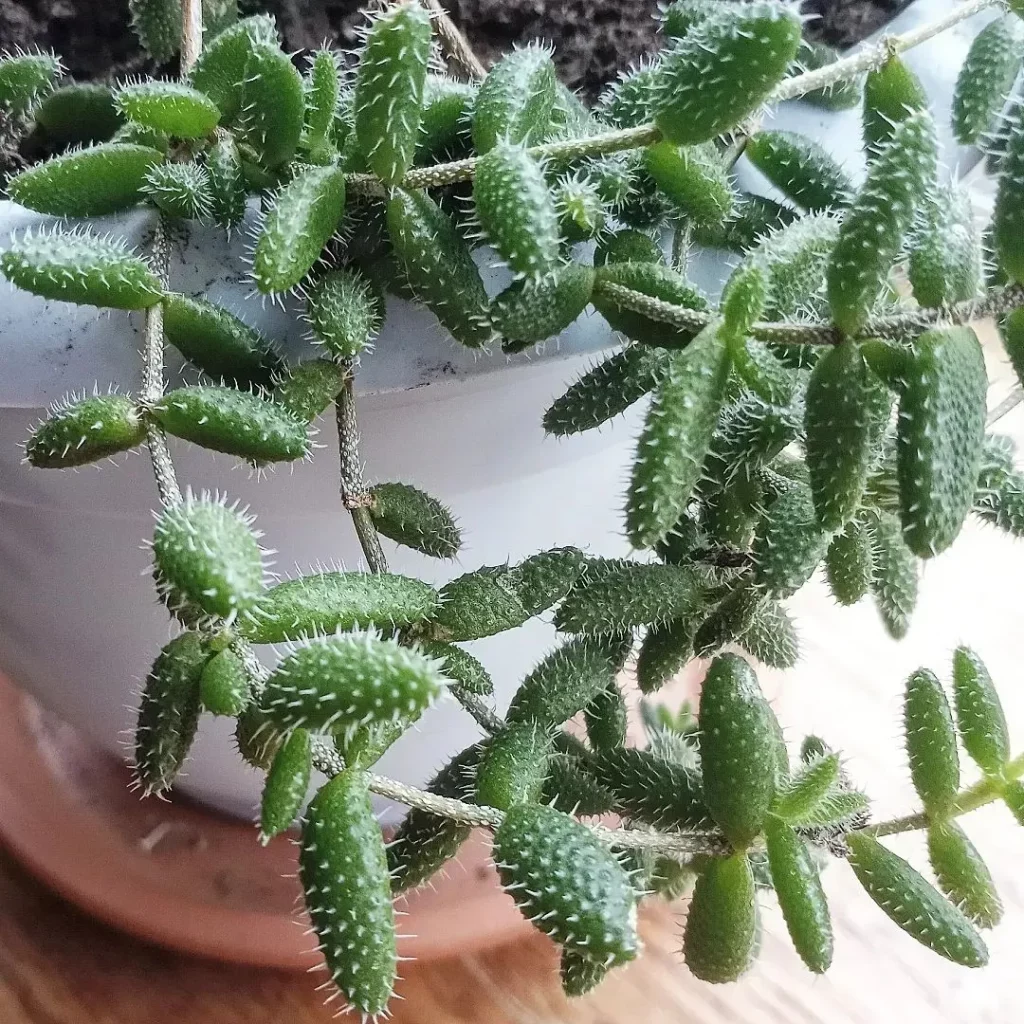
Proper fertilization is essential for the care and growth of your quirky pickle plant. By providing the right nutrients, you can encourage healthy foliage and vibrant blooms. Here are some best practices to follow when fertilizing your pickle plant:
1. Choose the Right Fertilizer
When selecting a fertilizer for your quirky pickle plant, opt for a balanced formula specifically designed for succulents. Look for a fertilizer with equal ratios of nitrogen (N), phosphorus (P), and potassium (K) to promote overall plant health.
2. Apply Fertilizer Sparingly
While pickle plants benefit from periodic fertilization, it’s important not to overfeed them. Apply the fertilizer sparingly to avoid nutrient burn or overstimulation of growth. Follow the manufacturer’s instructions for the recommended dosage and frequency.
3. Fertilize During the Growing Season
Fertilize your pickle plant during its active growing season, which typically occurs in spring and summer. This is when the plant requires additional nutrients to support its growth and development.
4. Avoid Fertilizing in Winter
During the winter months, pickle plants go through a period of dormancy. It is best to refrain from fertilizing the plant during this time to allow it to rest and conserve its energy.
5. Water Before Fertilizing
Prior to applying fertilizer, water your pickle plant thoroughly. This helps prevent fertilizer burn and ensures that the nutrients are evenly distributed to the plant’s roots.
6. Watch for Signs of Overfertilization
Keep an eye out for signs of overfertilization such as yellowing or browning of leaves, wilting, or stunted growth. If you notice these symptoms, reduce the frequency or concentration of fertilization to prevent further damage.
Pruning and Propagation Techniques for the Pickle Plant
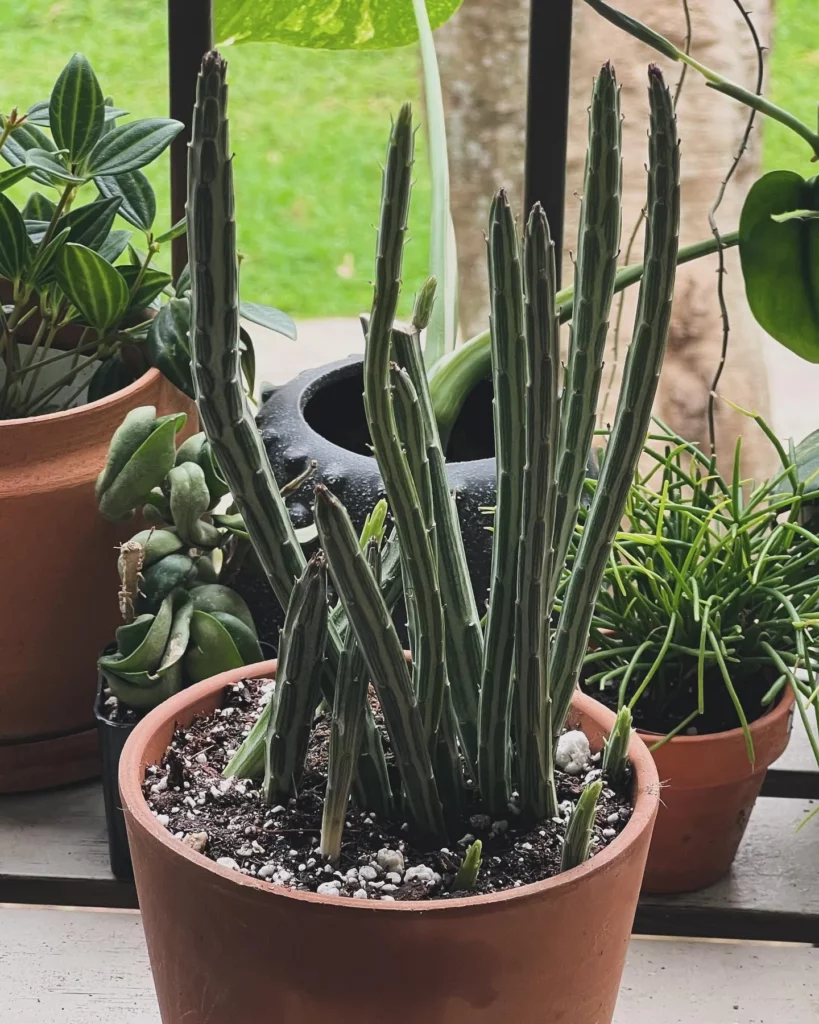
Pruning and propagation are essential practices for maintaining the compact shape of your quirky pickle plant and expanding your succulent collection.
By pruning, you can remove dead or overgrown parts, encouraging healthier growth and a more aesthetically pleasing appearance. Propagation allows you to create new plants from existing ones, a great way to share the joy of pickle plants with friends and family.
Pruning Pickle Plants
Pruning your pickle plant helps promote compact growth and prevents legginess. It’s best to prune your plant during the active growing season, typically in spring or summer. Here’s a step-by-step guide to pruning your pickle plant:
- Inspect your plant for any dead, diseased, or damaged leaves, stems, or branches.
- Using clean pruning shears or scissors, make clean cuts just above a leaf node or joint.
- Remove any leggy or elongated stems to encourage bushier growth.
- Dispose of the pruned plant parts properly to prevent the spread of pests or diseases.
Propagation Methods for the Pickle Plant
Propagating the pickle plant can be done through stem cuttings or leaf cuttings. Both methods are relatively straightforward, and with proper care, you can successfully propagate new plants. Here’s a guide to each propagation method:
Propagating with Stem Cuttings
Stem cuttings are an effective way to propagate pickle plants:
- Select a healthy stem from your pickle plant, preferably one that is at least 3-4 inches long.
- Using clean, sharp scissors or a knife, make a clean cut just below a leaf node.
- Allow the cut end of the stem to dry for a day or two to prevent rotting.
- Prepare a well-draining potting mix suitable for succulents.
- Insert the cut end of the stem into the potting mix, making sure it is secure and upright.
- Water the potting mix lightly and place the cutting in a location with bright, indirect sunlight.
- Maintain consistent moisture in the potting mix, but avoid overwatering.
- After a few weeks, you should start to see root growth and new shoots emerging from the stem.
- Once the new plant has established roots and has grown a bit, you can transfer it to a larger pot or garden bed for continued growth.
Propagating with Leaf Cuttings
Leaf cuttings can also be used to propagate pickle plants:
- Select a healthy leaf from your pickle plant.
- Gently twist the leaf from the stem, ensuring the entire leaf is intact.
- Allow the cut end of the leaf to dry for a day or two to prevent rotting.
- Prepare a well-draining potting mix suitable for succulents.
- Place the cut end of the leaf into the potting mix, burying it slightly to provide stability.
- Mist the potting mix lightly to provide moisture without saturating it.
- Place the leaf cutting in a location with bright, indirect sunlight.
- Over time, small plantlets or new leaves will start to emerge from the base of the original leaf.
- Once the new plantlets have developed roots and started to grow, you can transfer them to their individual pots or garden beds.
Propagation may take several weeks or even months, so be patient and provide proper care and attention to your new pickle plant babies.
| Propagation Method | Difficulty | Timeline |
|---|---|---|
| Stem Cuttings | Medium | 2-4 weeks for rooting, a few months for new growth |
| Leaf Cuttings | Easy | 4-8 weeks for small plantlets, a few months for independent growth |
Troubleshooting Common Issues with the Pickle Plant
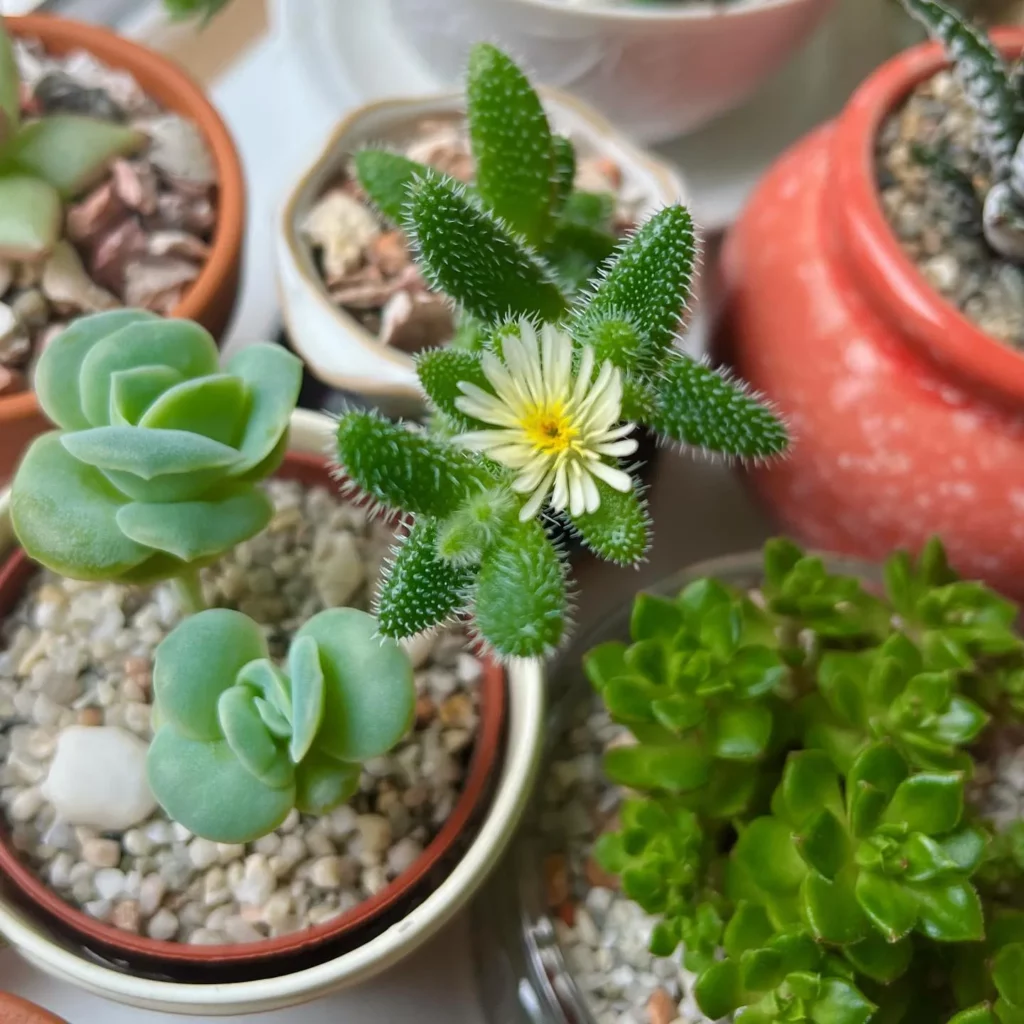
While the quirky pickle plant is known for its hardy nature, it can still face a few challenges. Being aware of common problems and how to address them can help you maintain a healthy and thriving plant.
One issue you may encounter is pests. Keep an eye out for mealybugs and aphids, which can infest the leaves and stem of your plant.
If you notice signs of these pests, such as small white cottony spots or sticky residue, treat your plant with a neem oil solution or insecticidal soap to eliminate them effectively.
Another problem that can arise is diseases. Look out for signs of fungal infections, such as leaf spotting or wilting foliage. If you suspect a disease, it’s crucial to remove affected leaves and isolate the plant to prevent further spread.
Applying a fungicide can also help in managing the issue.
Nutritional deficiencies can also affect the pickle plant’s growth. Yellowing leaves or stunted growth may indicate a lack of essential nutrients. To address this, consider using a balanced fertilizer formulated for succulents and follow the recommended application instructions. It’s important not to overfertilize, as this can lead to fertilizer burn.
FAQ
Q: How often should I water the pickle plant?
A: The pickle plant requires watering once the top inch of soil feels dry. It is important not to overwater or let the plant sit in water, as it is susceptible to root rot. A good guideline is to water deeply and then allow the soil to dry out before watering again.
Q: Can the pickle plant tolerate shade?
A: While the pickle plant prefers bright, indirect light, it can tolerate some shade. However, too much shade can result in elongated and leggy growth. It is best to provide the plant with filtered sunlight or bright indirect light for optimal growth.
Q: What type of soil should I use for the pickle plant?
A: The pickle plant thrives in well-draining soil. Use a succulent or cactus potting mix that is specifically formulated to provide good drainage. Adding perlite or coarse sand to the soil mix can further enhance drainage and prevent waterlogged roots.
Q: How can I propagate my pickle plant?
A: The pickle plant can be propagated through stem or leaf cuttings. To propagate through stem cuttings, simply take a healthy stem, let it dry for a few days, and then plant it in well-draining soil. Leaf cuttings can be taken by gently removing a leaf and placing it on top of the soil. With proper care, roots will develop, and a new plant will grow.
Q: Are there any common issues that I should watch out for with the pickle plant?
A: The pickle plant can be susceptible to pests such as mealybugs and aphids. Keep an eye out for signs of infestation, such as white cottony clusters or small insects on the plant. Additionally, overwatering can lead to root rot, while underwatering can cause the leaves to shrivel and turn brown. Take care to strike the right balance to keep your pickle plant healthy.

